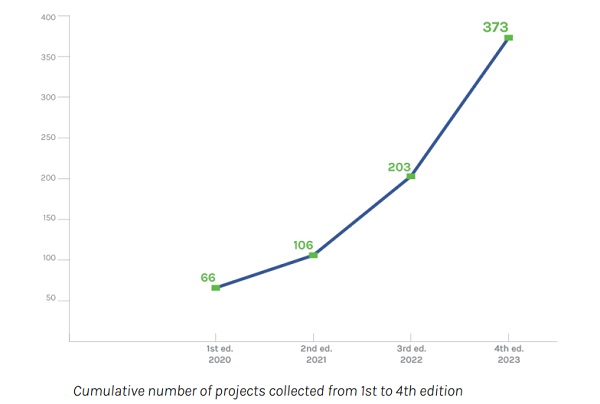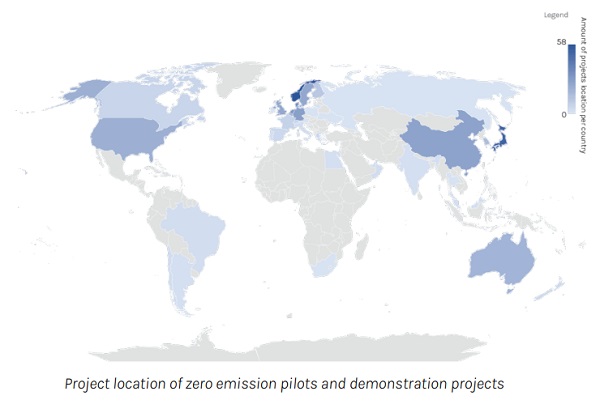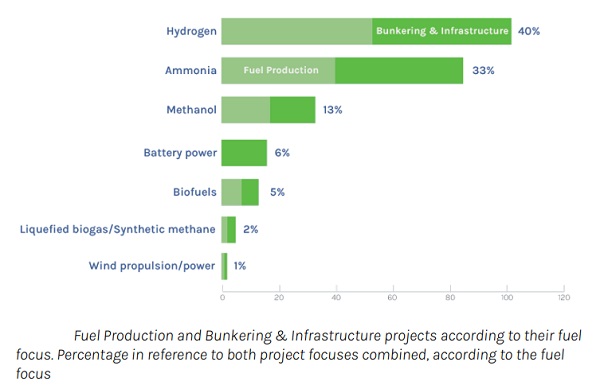Getting to Zero Coalition: 84% increase in zero-emission pilots and projects
The fourth edition of the Mapping of Zero-Emission Pilots and Demonstration Projects report identifies increased activity among the industry to innovate and find collaborative solutions to decarbonise shipping.
This year’s report identified 373 zero-emission pilots and demonstration projects, which is an 84% increase over last year’s edition. Notably, new projects have emerged in Thailand, Egypt, Malaysia, and South Africa.
| Read More: DNV: Methanol as fuel heads for the mainstream in shipping |
Key takeaways:
- More than one-third of registered projects have progressed to a new phase or reached an important development milestone since the third edition. This includes more than 30 Approvals in Principle for ship technology projects in 2022 and 2023.
- Pilots and demonstration projects continue to take a highly collaborative approach.
- 87% of projects involve at least two parts of the value chain. The involvement of classification societies has increased, while demandside actors and financial institutions remain comparatively underrepresented.
- 70% of projects involve project partners from at least two countries. The top five countries most frequently represented in projects with international industry collaboration are Norway, Germany, the United Kingdom, the United States, and Japan.
- Hydrogen-based fuels face continued innovation needs with ammonia and hydrogen as the top fuels in focus. More mature methanol technologies have begun to move beyond pilot and demonstration work to a commercialisation phase.
- Bunkering and infrastructure technologies see an increased focus on bunkering vessels.
- Around 40% of all projects are publicly funded, a majority of these by European funders.

Partnerships are growing between developing and developed countries as well and there is a global spread with some regions having higher industry activity than others. Most projects are based in Europe (56%), Asia (33%), and North America (9%), and the top three countries by the number of projects are Norway, Japan, and Denmark.
"Now we need industry’s actions to be backed by an ambitious revised greenhouse gas emissions strategy from the International Maritime Organization", said Johannah Christensen, CEO of the Global Maritime Forum

Findings see a continued increase in projects focusing on hydrogen-based fuels with ammonia and hydrogen in the lead. Ammonia is the dominant fuel focus for larger ship types. In addition, ammonia-powered ship designs received most of the Approvals in Principle in the last year.

For smaller ships, the leading technologies remain battery technology, hydrogen fuel cells, hydrogen internal combustion engines, and methanol. More mature methanol technologies have begun to move beyond pilot work to a commercialisation phase.
"To achieve zero emissions by 2050, we will need three main assets. First, we need technology. Second, we need a trajectory, a common path. And third, we need financing on a national and international level", said Eric Banel, French General Director for Maritime Affairs, Fisheries, and Aquaculture
To remind, the Getting to Zero Coalition is an industry-led platform for collaboration that brings together leading stakeholders from across the maritimeand fuels value chains with the financial sector and others committed to making commercially viable zero-emission vessels a scalable reality by 2030, towards full decarbonisation by 2050.
It is managed by the Global Maritime Forum, who initially founded the Coalition together with the World Economic Forum and Friends of Ocean Action.
"Sharing how projects are developed from the earliest stages helps us to make informed decisions towards our shared 2050 decarbonisation goals", said Paul Delouche, Director of Strategy & Advanced Services Bureau Veritas.
Source: Safety4sea
| Read Here | |
 |
|



































